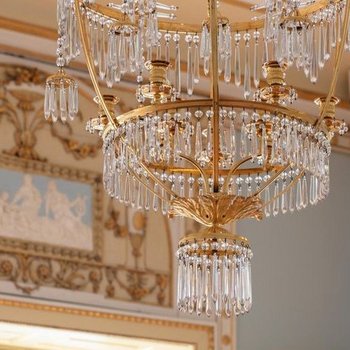Voices Mag: In your work as the conservator of contemporary art at the Schenkung Sammlung Hoffmann here at the museum, you are in charge of the conservation of some 1,200 works of painting, drawing, photography and sculpture, as well as media and installation art. What does a typical day of work at the collection looks like?
Franziska Klinkmüller: My workday schedule is never the same and wholly subject to the current projects handled by our team. However, the core task at hand remains very much the same: It’s all about the preservation of artworks in their material substance, and, with that, the artistic intention behind them. To that end you’ll find me in the exhibition spaces, at my computer, in the storage, the restoration workshop, or on a transportation journey. I’ll be standing up, sitting or lying down, in close proximity to the artworks, to inspect their condition. If, for example, it turns out that a layer of paint attaches too loosely to a support, or a surface has become excessively dusty, I’ll be taking action by planning the steps needed for conservation and restoration – ones I’ll either undertake to perform myself, in the museum’s workshop, or by commissioning an outside conservator for the job. Based on its physical condition, I’ll determine the conditions under which a given work may be transported or displayed in the first place, so that no damage is sustained.
You often have to deal with works that are ephemeral and perishable, as well as time-based media and materials. What are the challenges arising from that?
There is, in fact, a broad palette of materials artists have been employing throughout modernity to produce their art, which poses a great challenge. Contemporary art conservators need to deal not just with established artistic means, such as oil on canvas, wood or stone, but also with items such as neon tubes, edibles, VHS tapes, outdated monitors and a host of synthetic materials. Many of these have a short life span and are given to decay. Synthetic foam shows considerable signs of decay fairly quickly, so that all of a sudden a sculpture is no longer pristine and supple but rather yellowish and stiff. Or a work incorporating electrical components such as light bulbs or an electrical mechanism – these no longer meet the technical standard in just 10 years, which means that unless it is rebuilt, the work cannot go on display. Conservators are accountable for every decision taken towards the preservation of an artist’s intention, and so, along with the great variety in materials comes a vast multitude of artistic expressions that we must take note of and understand.
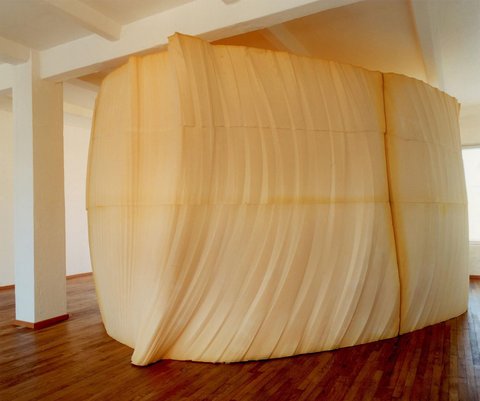
Ernesto Neto, the house, 2003, Ausstellungsansicht Sammlung Hoffmann, Berlin. © Ernesto Neto, Foto: Sammlung Hoffmann, Berlin.
Apropos a short life span: What can your work teach us on sustainability awareness?
The whole issue of sustainability is certainly a pertinent and complicated one in my day-to-day work. The safekeeping of most artworks extends to their storage, too. As conservators, we must set the climatic controls in storage based on the different materials to insure their best possible conservation. To give an example, the optimal conservation of photographs necessitates relatively low temperatures in storage, which means, during the summer months especially, that air conditioning is on full capacity. A sustainability-informed approach would require that, already in the planning stages of storage facilities, we insure that the structure itself is climate-efficient – a field that is currently booming.
But on top of that, as a conservator I’m considering every object also with regard to the materials it’s made of. As part of our training we become aware of properties such as durability, the manufacturing process and material decay. To me, ascertaining which materials an object is made of is indispensible in daily life too, when opting for sustainable products for example. At the moment, I’m working on the conservation scheme for an immersive installation by Ernesto Neto from 2003, “the house”, made of polyurethane foam. While immersive, the work is comprised of relatively short-lived synthetic foam, meaning that it will lose its suppleness in just a few short years and no longer be accessible to visitors in immersive form. In view of various considerations such as the artist’s intention, the material condition and the options available for conservation, our team is currently elaborating a long-term scheme for handling the work at the museum.
Could you point to a work that is of particular interest in terms of material sustainability?
The artist Teresa Murak is often concerned in her works with natural processes of growth and transformation. She works mostly with organic substances such as earth, cloth, sour dough, and, time and again, watercress. Her work Ohne Titel (Handschuhe) from 1975/6 shows two gloves made of germinated watercress that is poured into a transparent synthetic vessel. The cresses are germinated through the heat generated by the body, while the gloves are being worn. It is through the heat of the body that something new comes into being – an energy that, properly natural, is thus being activated. To me, this work calls attention to the wonderful processes in nature, of which the human body, too, is part. To my understanding, sustainability is also about our own actions construed as part nature.
Conversely – from the standpoint of sustainability – a work that contains hardly any physical components is interesting in its own way, in that it is easily transportable and takes up no storage space. Keep in mind that storage is always climate controlled, and that the transportation of sizable works is CO2 intensive.
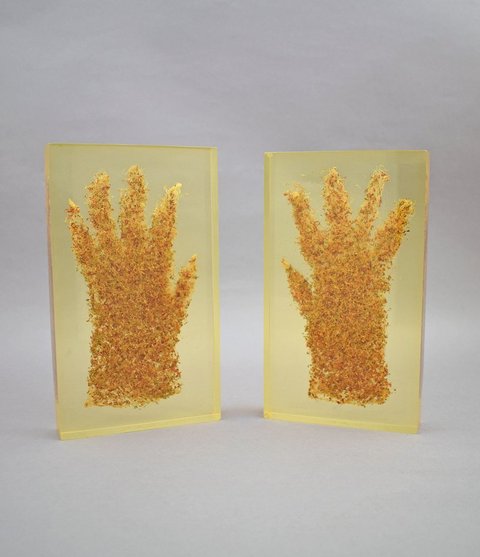
Teresa Murak, Ohne Titel (Handschuhe), 1975/76. © Staatliche Kunstsammlungen Dresden, Foto: Thomas Seidel.
Your outlook on art is greatly informed by considerations of media and materiality. What, to you, makes a compelling artwork?
I find it exciting when, for example, materials that are drawn from daily life are made into something new. “Autômato” by José Damasceno is a sculpture made of polystyrene parts lying on the floor, the kind used in the packaging of electric appliances. Each of us has had these building blocks in their hands at some point, but mostly we proceed to throw them away. The artist however had sought them out, carefully collecting these to assemble them into a body. Only on second glance does it becomes clear to us that the robot-like figure lying on the floor is comprised of these disposable parts. I find this work compelling due to the choice of materials which seeps over to the form language of the sculpture, and for its contents, which lends itself to recombination by each individual viewer. But there are so many vastly different approaches in contemporary art that for me, there isn’t really a rule of thumb on how content, form and material should interact.
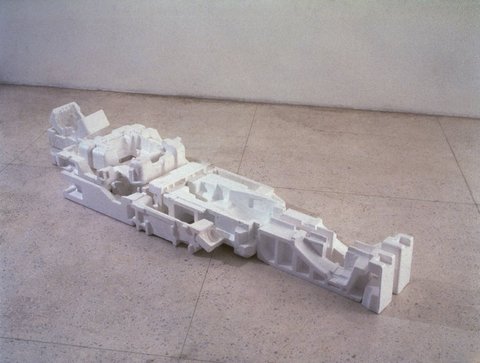
José Damasceno, Autômato, 2000. © Staatliche Kunstsammlungen Dresden, Foto: Vicente de Mello.
Beyond that: Could you cite an artwork that has appealed to you especially?
The works in the collection are all remarkable. I have yet to see each and every one, but the installation “Celesta” by Madeleine Berkhemer, which came about two years ago in Prague, I find very striking. It's a room installation made of brightly-colored pantyhose stretched out across the walls, creating a cobweb of exciting colors and forms. This network balances a nest at its center, made of globules, sausage-like stuffing and wigs. In this case, it is the artist herself who had put the piece together. I was astonished to see how this apparition, made of pantyhose to command an entire space, emerges out of a case no bigger than two cardboard boxes.
Also of interest:
3D printing meets porcelain restoration
Every German knows the saying about the elephant in the china shop (in English it’s usually „the bull“) and so it may come as a surprise that there are elephants in Dresden's Porzellansammlung (porcelain collection). However, these are themselves made of the fine material and so they do not cause any damage, but would rather themselves be threatened by the dangers that the proverbial elephant means for the precious material. In a cooperation with Fraunhofer IKTS, it has now been possible to restore one of the elephants in the Porzellansammlung that was missing its trunk using 3D printing.
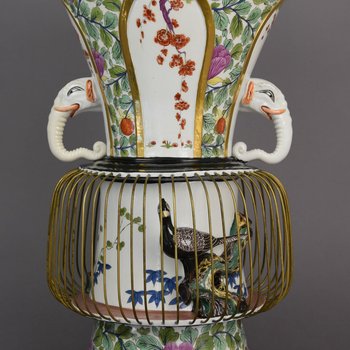
"Whatever they feel is right" - Ten questions for Chiharu Shiota
This year, two installations by the Japanese-born artist Chiharu Shiota from the Schenkung Sammlung Hoffmann collection are on view at Staatliche Kunstsammlungen Dresden. In this interview, she provides insight into her work process and clears up old misconceptions.
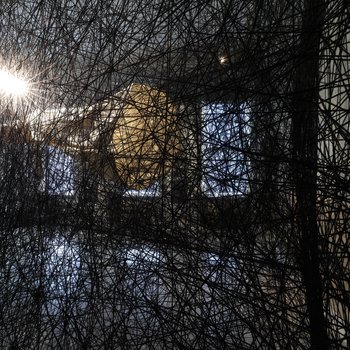
A Masterwork Comes to Light Again
With an extensive restoration at the Kaiserzimmer – previously known as the Weinling-Zimmer – this important suit of chambers, located in the west wing of the Bergpalais, Schloss Pillnitz, is again part of the visitors’ trajectory at the Kunstgewerbemuseum. Now that these outstanding rooms of early neoclassical style shine again in their former glory, they also attest to a history full of turns. Christiane Ernek-van der Goes on the cultural history of this masterwork. A reprint from our blog.
